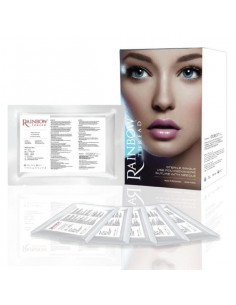Threadlifting

100267
» PDO spiral threads are recommended for volume restoration.
» Due to its spiral shape wrapped around the needle, the thread has a better regenerative effect than PDO monofilaments.
» The thread is flexible and elastic, which is especially important when correcting areas of high mimicry activity.
RAINBOW THREAD PDO SCREW | 27G/60/100
immediately available
€72.25
€85.00
RAINBOW THREAD HEART LIFT. COG | 18G/100/185
100259
Heart Lifting is an innovative notched yarn made using a casting technique.
Unlike toothed types of threads, the notches are not damaged by the casting method, because the thread is made by pressing it in the mold.
This technology extends the biodegradation period, which provides a longer lasting effect.
The unique design of the heart-shaped incisions...
immediately available
€499.00
The Thread Lift is the most effective lifting program for skin rejuvenation. Thread lift is used on the face, neck, décolleté area and body.




